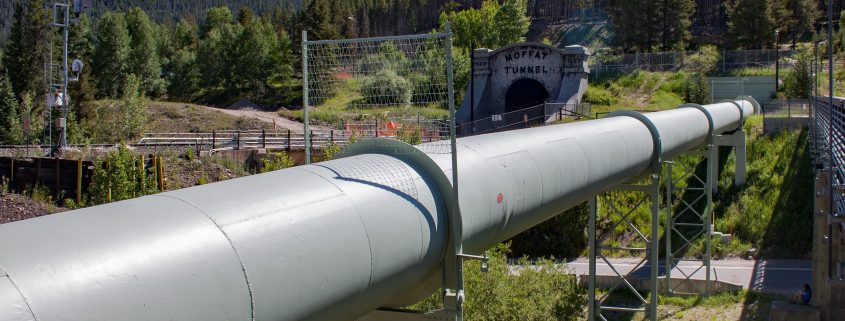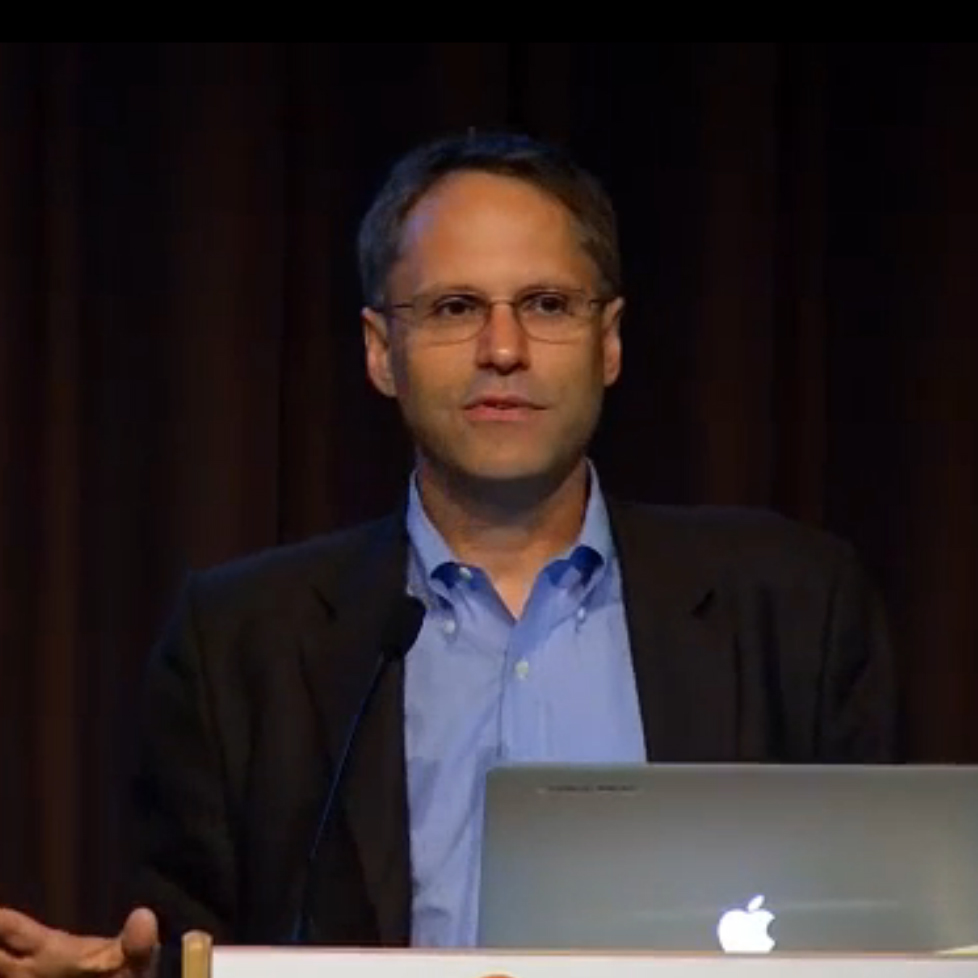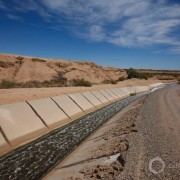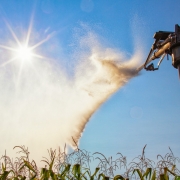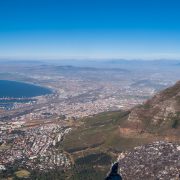Colorado River’s Tale of Two Basins
Water diversions upstream increase risk in stressed watershed.
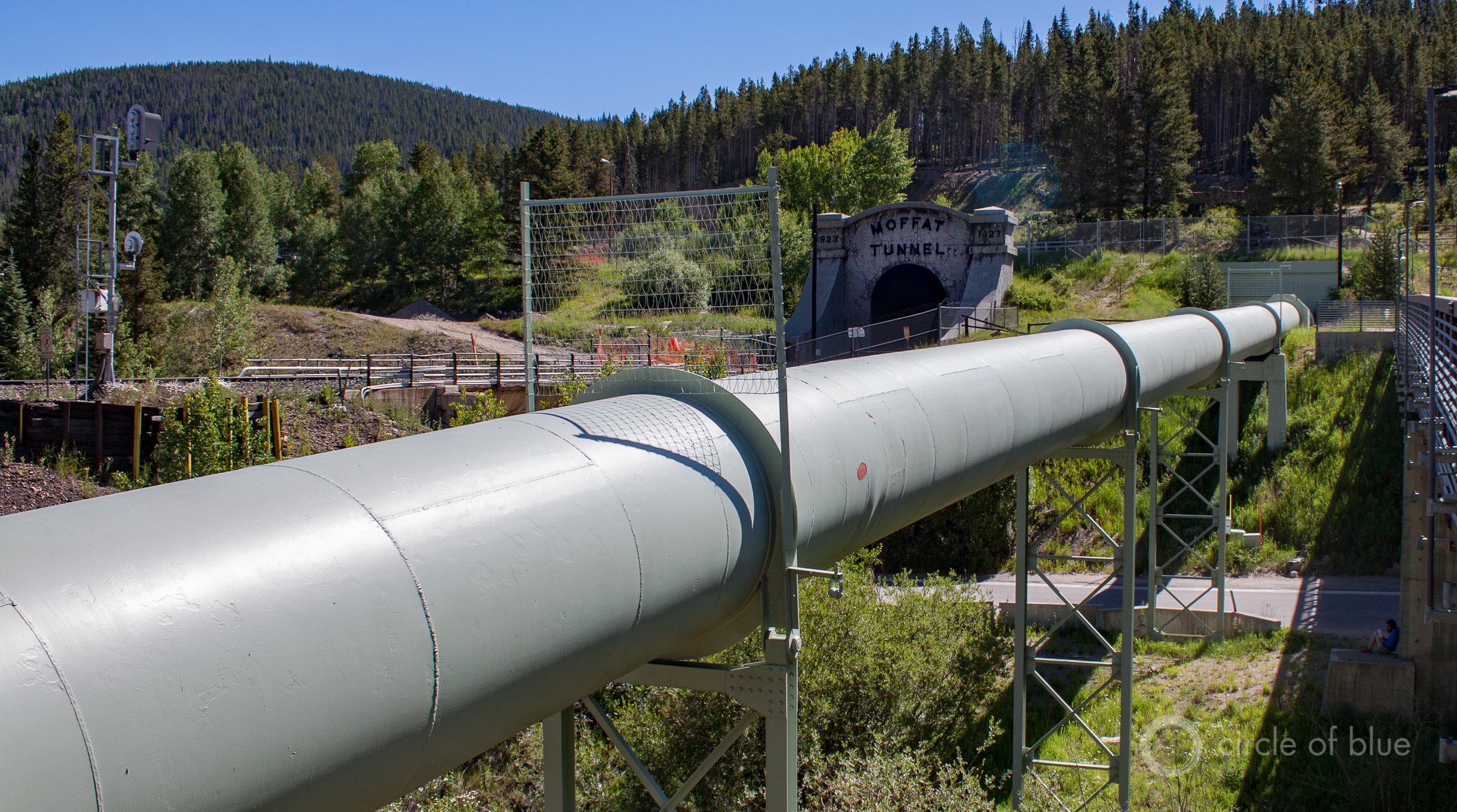
The Moffat tunnel, built in 1936, moves Colorado River Basin water across the Rockies, for use in homes and business in Denver. Denver Water wants to expand the project. Photo © Brett Walton / Circle of Blue
By Brett Walton, Circle of Blue
In Colorado, rivers flow not only down mountain slopes but beneath them, across them, and through them.
Nearly four dozen canals, tunnels, and ditches in the state move water out of natural drainages and into neighboring basins. Some snake across high passes. Others pierce bedrock.
All manmade water courses, meant to supply farming, manufacturing, or household use, eventually grow so familiar that they become part of the landscape. But old infrastructure can come to life in different form. Recently, Gov. John Hickenlooper cast renewed attention on water supply and growth in the West with a decision in a long-running process to expand a Colorado River diversion.
That diversion is the Moffat tunnel which supplies water to Gross reservoir. From its western portal at the base of Winter Park’s ski slopes the 80-year-old conduit, blasted through layers of gneiss, granite, and schist, sends water from west-flowing Colorado River tributaries to Gross reservoir, east of the Continental Divide.
Denver Water, the public utility that owns Gross reservoir, wants to triple its capacity in order to secure water for one of the country’s fastest growing big cities. The $US 380 million project, under state and federal review since 2003, gained Gov. Hickenlooper’s endorsement on the last day of June, a week after it collected a key state water quality permit. The final piece will be a dredging permit from the U.S. Army Corps of Engineers.
The Gross reservoir expansion reflects a fundamental tension for the seven states and two countries that share the Colorado River: how many more diversions can the stressed basin tolerate? The watershed is drying but states in the upper basin still plan to pull more water out of the river. Whether they should — and how much — is a matter of constant debate.
“The challenge becomes reconciling the ability to develop water with the reality that you are assuming a ton of risk,” James Eklund, director of the Colorado Water Conservation Board, told Circle of Blue.
A Basin Diverges
Divided by nearly a century of law and policy into upper and lower basins, the Colorado River states are moving in two directions regarding water use.
Arizona, California, and Nevada, considered the “lower basin,” are in the midst of a remarkable effort to voluntarily cut their use of Colorado River water. The three states are on track to consume less than 7 million acre-feet in 2016, the lowest total since 1992 and 500,000 acre-feet less than their legal entitlement. The cuts are in response to shrinking water levels in Lake Mead, a cornerstone of the Southwest’s water supply and electric power infrastructure. The water savings this year amount to more than 6 feet of water in the big reservoir.
Two other water-saving developments are taking place in the lower basin. One is a pilot conservation program run jointly with the upper basin. Local and federal agencies offered $US 14.5 million for projects that conserve water: installing efficient irrigation systems, fallowing farmland, or storing water underground where it cannot evaporate. The saved water will be stored in either Lake Mead or Lake Powell, and the results of the trial will determine the most cost-effective strategies to pursue in the future.
The other development is a renegotiation of a shortage-sharing agreement signed in 2007. Arizona, California, and Nevada are discussing a new framework in which each state would make deeper cuts sooner. The discussions demonstrate a hard-nosed pragmatism that belies the oft-repeated “water wars” rhetoric and provides hope that the water crises in the American West can be managed.
Upstream Developments
The mood is somewhat different in the upper basin where the four states have their eyes on more water. By law they have rights to it. The Colorado River Compact, a signed in 1922, granted each basin 7.5 million acre-feet.
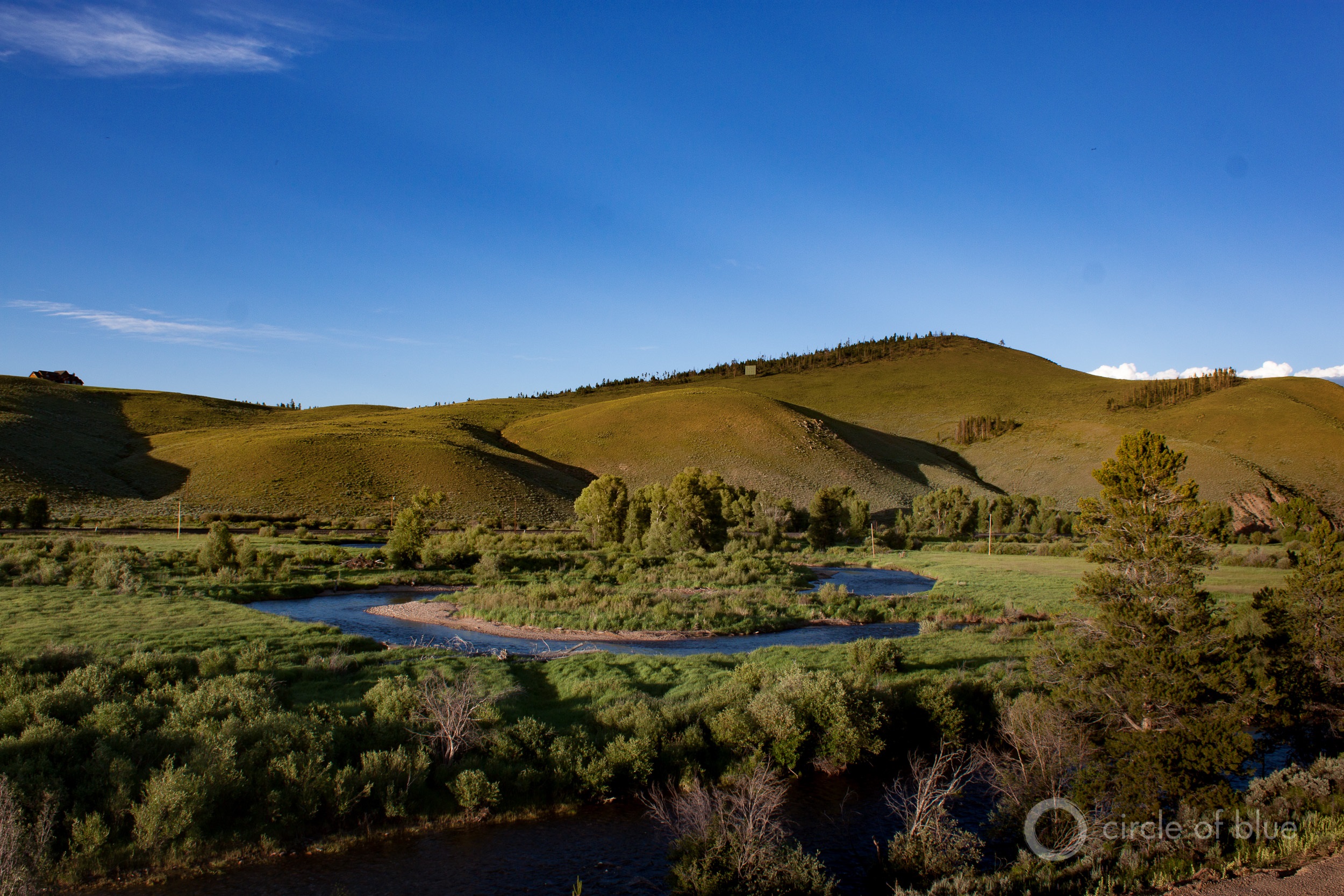
Water that flows into the Moffat tunnel comes from the Fraser River, shown here near Granby, Colorado. Photo © Brett Walton / Circle of Blue
The river, however, will not supply that much. The allocation was based on a few wet years when air temperatures were much cooler than today. As a result, water managers in the upper basin have lowered their expectations. Officials from Colorado, New Mexico, Utah, and Wyoming confirmed to Circle of Blue that the century-old promise is unrealistic. None of the four expects the river to provide that much water. “We know that,” Eric Millis, director of the Utah Division of Water Resources, acknowledged.
Utah, along with New Mexico and Wyoming, are now using a different number for planning purposes: 5.8 million acre-feet. The Bureau of Reclamation came up with that figure, called the hydrologic determination, in a 2007 water supply study for Navajo reservoir, in New Mexico.
Eklund said that Colorado prefers not to use a fixed number because runoff changes each year. “It’s less a conversation about how much water to develop than a discussion about how much risk to take on,” he said.
Each new project brings the basin closer to the limit. The upper basin used an average of 4.5 million acre-feet between 2011 and 2013, according to the Bureau of Reclamation. More recent numbers are not available. Data collection in the upper basin is not as well-funded as in the lower basin, which results in a delay of several years while states gather the information, according to Kib Jacobson of the Bureau of Reclamation.
A Game of Risk
Some observers say that the risk threshold has already been crossed. A group of respected academics calling themselves the Colorado River Research Group argued in a 2014 paper that the basin must strive to use less water, not more. “Any conversation about the river that does not explicitly acknowledge this reality is not helpful in shaping sound public policy,” they wrote.
Eklund said he understands the sentiment behind the call for restraint. However, Colorado’s constitution is set up, he said, to protect the right to develop water.
“The state is not going to call balls and strikes and say whether a project is a good investment,” he said. “You take it at your peril. You assume the risk.”
The upper basin is starting to think about those risks. Like the lower basin, it is participating in the pilot conservation program. Most of its projects are located in Colorado and Wyoming. The goal is to prop up Lake Powell with the saved water.
But there are also a pack of new straws waiting to dip into the river. Utah is negotiating a legal settlement with the Navajo Nation that will grant rights to the San Juan River, a Colorado tributary. Two counties in southwest Utah, want a 139-mile pipeline from Lake Powell. A proposed nuclear plant in Utah had its right to draw water from the Green River, another tributary, upheld two weeks ago by the state appeals court. The Windy Gap project in Colorado would divert more of the Colorado River headwaters across the Rockies to cities on the Front Range. Some of these projects may not be completed. But each represents an incremental increase in risk.
Is it contradictory to approve new diversions at the same time that upper basin states are paying farmers to leave water in the river? Millis said he does not think so. He argued that the conservation program is essentially an insurance policy. The states need to see how quickly the system responds to cuts in case fast action is needed.
“If we get into a tight situation with Powell and the lake were to drop to critical levels, it is important that we have a plan we could implement,” Millis said.
Brett writes about agriculture, energy, infrastructure, and the politics and economics of water in the United States. He also writes the Federal Water Tap, Circle of Blue’s weekly digest of U.S. government water news. He is the winner of two Society of Environmental Journalists reporting awards, one of the top honors in American environmental journalism: first place for explanatory reporting for a series on septic system pollution in the United States(2016) and third place for beat reporting in a small market (2014). He received the Sierra Club’s Distinguished Service Award in 2018. Brett lives in Seattle, where he hikes the mountains and bakes pies. Contact Brett Walton

